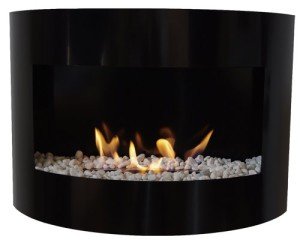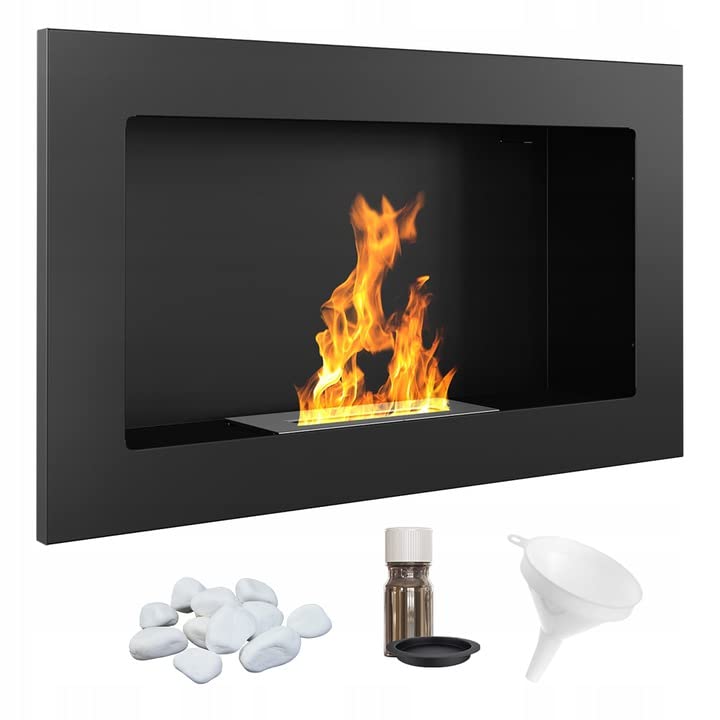As the world becomes increasingly conscious of climate change and its effects, many individuals and families are searching for sustainable alternatives in their homes. One such solution that has gained significant popularity is the bioethanol wall-mounted fireplace. Designed not only for efficiency and convenience but also for aesthetic appeal, these fireplaces use bioethanol as a clean-burning fuel. This guide delves into the benefits, features, and considerations of choosing a white bioethanol wall-mounted fireplace for your space.
What is a Bioethanol Fireplace?
A bioethanol fireplace is a modern, eco-friendly heating solution that utilizes bioethanol, a renewable energy source derived from fermented plant material. Unlike traditional fireplaces that rely on wood or fossil fuels, bioethanol fireplaces produce no harmful emissions, making them an excellent choice for individuals aiming to reduce their carbon footprint.
Key Features of Bioethanol Fireplaces:
- Eco-Friendly: Bioethanol burns cleanly, emitting only water vapor and a small amount of carbon dioxide.
- Versatile Design: Available in various designs, including wall-mounted options that can enhance the aesthetic appeal of any room.
- Ease of Installation: They do not require a chimney or flue system, making installation simpler.
- Adjustable Flames: Many models allow users to control the flame intensity, providing customizable ambiance.
Advantages of Wall-Mounted Bioethanol Fireplaces
The increasing popularity of wall-mounted bioethanol fireplaces can be attributed to several advantages:
1. Space-Saving Design
Wall-mounted fireplaces are ideal for homes with limited space. By being mounted on the wall, they free up floor space, providing an elegant design option that can complement any room decor.
2. Stylish Aesthetics
With a sleek white finish, these fireplaces can serve as a focal point in a living room or bedroom. Their modern design appeals to various décor styles, from contemporary to minimalist.
3. No Need for Ventilation
Since bioethanol burns cleanly, there is no need for complicated ventilation systems. This feature allows homeowners to install the fireplace virtually anywhere, free from traditional restrictions.
4. Safety Features
Many models come equipped with safety features like flame extinctions systems and child-proof designs, ensuring peace of mind for families with children.
5. Low Maintenance
Compared to traditional wood-burning fireplaces, bioethanol units are significantly easier to maintain. Regular cleaning is all that is needed, making them a practical choice for busy households.
Considerations When Choosing a Bioethanol Fireplace
While there are many benefits to bioethanol wall-mounted fireplaces, there are several considerations to keep in mind:
- Fuel Availability: Ensure that you can easily acquire bioethanol, as not all retailers carry it.
- Scent: While many bioethanol fireplaces burn cleanly, some users report a slight ethanol scent when the fireplace is in use.
- Heat Output: Depending on the model, some bioethanol fireplaces may not produce enough heat for larger rooms, requiring an additional heating source.
Table: Comparison of Bioethanol Wall-Mounted Fireplaces
| Feature | Bioethanol Wall-Mounted Fireplace |
|---|---|
| Eco-Friendly | Yes |
| Ventilation Required | No |
| Installation Type | Wall-Mounted |
| Heat Output (BTUs) | Varies by model (1000-3000 BTUs) |
| Maintenance | Low |
| Flame Control | Adjustable |
| Average Cost | £300 - £1,500 |
FAQs About Bioethanol Wall-Mounted Fireplaces
Q1: How do I operate a bioethanol fireplace?
A: To operate a bioethanol fireplace, make sure it is placed on a non-flammable surface, fill the burner with bioethanol fuel, light it with a long lighter, and enjoy the ambiance. Always follow the manufacturer's instructions for safety.
Q2: Do bioethanol fireplaces need to be vented?
A: No, bioethanol fireplaces do not require venting as they burn cleanly, producing minimal emissions. This allows for flexible placement in your home.
Q3: Can I use my bioethanol fireplace indoors?
A: Yes, bioethanol fireplaces can be safely used indoors. However, it is crucial to ensure proper ventilation in the space for airflow.
Q4: Are there any health risks associated with using a bioethanol fireplace?
A: When used according to the manufacturer’s instructions, bioethanol fireplaces are generally safe. However, ensure the area is well-ventilated to avoid inhaling any fumes.
Q5: How long does the fuel last, and how do I refill it?
A: The burn time varies by the size of the fireplace and the amount of fuel. Generally, a liter of bioethanol can burn for approximately 3-4 hours. To refill, allow the fireplace to cool, and carefully pour the bioethanol into the burner, avoiding any spillage.
The eco-friendly bioethanol wall-mounted fireplace is a stylish and practical solution for modern living spaces. With various designs available, particularly in sleek white finishes, these fireplaces can elegantly enhance any room's ambiance. By choosing this innovative heating option, homeowners not only enjoy the aesthetic benefits but also contribute positively to environmental sustainability.
As more individuals seek to create warm, inviting spaces in a responsible way, the bioethanol wall-mounted fireplace stands out as a leading choice in eco-friendly home heating solutions.





